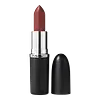What's inside
What's inside
 Key Ingredients
Key Ingredients

 Benefits
Benefits

 Concerns
Concerns

 Ingredients Side-by-side
Ingredients Side-by-side

Polybutene
Octyldodecanol
EmollientPentaerythrityl Tetraisostearate
EmollientRicinus Communis Seed Oil
MaskingSynthetic Wax
AbrasiveDiisostearyl Malate
EmollientVp/Hexadecene Copolymer
Hydrogenated Polyisobutene
EmollientHdi/Trimethylol Hexyllactone Crosspolymer
Microcrystalline Wax
Emulsion StabilisingSimmondsia Chinensis Seed Oil
EmollientSynthetic Beeswax
Emulsion StabilisingArgania Spinosa Kernel Oil
EmollientRosa Moschata Seed Oil
EmollientCamellia Oleifera Seed Oil
Skin ConditioningPunica Granatum Flower Extract
Skin ConditioningPolyglyceryl-3 Diisostearate
EmulsifyingSqualane
EmollientSilica
AbrasiveDisteardimonium Hectorite
StabilisingVanillin
MaskingPentaerythrityl Tetra-Di-T-Butyl Hydroxyhydrocinnamate
AntioxidantTocopherol
AntioxidantMica
Cosmetic ColorantCI 77891
Cosmetic ColorantCI 77491
Cosmetic ColorantCI 77492
Cosmetic ColorantCI 77499
Cosmetic ColorantCI 42090
Cosmetic ColorantCI 77163
Cosmetic ColorantCI 77400
Cosmetic ColorantCI 77742
Cosmetic ColorantCI 15850
Cosmetic ColorantCI 45380
Cosmetic ColorantPolybutene, Octyldodecanol, Pentaerythrityl Tetraisostearate, Ricinus Communis Seed Oil, Synthetic Wax, Diisostearyl Malate, Vp/Hexadecene Copolymer, Hydrogenated Polyisobutene, Hdi/Trimethylol Hexyllactone Crosspolymer, Microcrystalline Wax, Simmondsia Chinensis Seed Oil, Synthetic Beeswax, Argania Spinosa Kernel Oil, Rosa Moschata Seed Oil, Camellia Oleifera Seed Oil, Punica Granatum Flower Extract, Polyglyceryl-3 Diisostearate, Squalane, Silica, Disteardimonium Hectorite, Vanillin, Pentaerythrityl Tetra-Di-T-Butyl Hydroxyhydrocinnamate, Tocopherol, Mica, CI 77891, CI 77491, CI 77492, CI 77499, CI 42090, CI 77163, CI 77400, CI 77742, CI 15850, CI 45380
Octyldodecanol
EmollientPentaerythrityl Tetraisostearate
EmollientPolybutene
Polyglyceryl-2 Triisostearate
EmulsifyingMicrocrystalline Wax
Emulsion StabilisingEuphorbia Cerifera Wax
Bis-Diglyceryl Polyacyladipate-2
EmollientOctyldodecyl Stearoyl Stearate
EmollientBeeswax
Emulsion StabilisingOzokerite
Emulsion StabilisingPolypropylene
Dicalcium Phosphate
AbrasiveEthyl Vanillin
MaskingLecithin
EmollientTocopherol
AntioxidantAscorbyl Palmitate
AntioxidantBenzyl Alcohol
PerfumingCitric Acid
BufferingSilica
AbrasiveCI 77891
Cosmetic ColorantIron Oxides
CI 42090
Cosmetic ColorantCI 15850
Cosmetic ColorantCI 15985
Cosmetic ColorantOctyldodecanol, Pentaerythrityl Tetraisostearate, Polybutene, Polyglyceryl-2 Triisostearate, Microcrystalline Wax, Euphorbia Cerifera Wax, Bis-Diglyceryl Polyacyladipate-2, Octyldodecyl Stearoyl Stearate, Beeswax, Ozokerite, Polypropylene, Dicalcium Phosphate, Ethyl Vanillin, Lecithin, Tocopherol, Ascorbyl Palmitate, Benzyl Alcohol, Citric Acid, Silica, CI 77891, Iron Oxides, CI 42090, CI 15850, CI 15985
Ingredients Explained
These ingredients are found in both products.
Ingredients higher up in an ingredient list are typically present in a larger amount.
Ci 15850 is the pigment color red. It is an azo dye and created synthetically.
Azo dyes need to be thoroughly purified before use. This allows them to be more stable and longer-lasting.
This ingredient is common in foundations, lipsticks, and blushes. This color is described as brown/orangey red.
It has many secondary names such as Red 6 and Red 7. According to a manufacturer, Red 6 usually contains aluminum.
Learn more about CI 15850Ci 42090 is a synthetic dye created from petroleum. It is used to give a bright blue color to cosmetics, medicine, and food.
Ci 77891 is a white pigment from Titanium dioxide. It is naturally found in minerals such as rutile and ilmenite.
It's main function is to add a white color to cosmetics. It can also be mixed with other colors to create different shades.
Ci 77891 is commonly found in sunscreens due to its ability to block UV rays.
Learn more about CI 77891Microcrystalline Wax is created by de-oiling petroleum. It is highly refined and purified before being added to cosmetics.
Microcrystalline Wax is used to enhance the texture and create even consistency. It helps stabilize a product by preventing ingredients from separating.
Octyldodecanol is a fatty alcohol. It is primarily used to enhance the texture of products.
As an emulsifier, Octyldodecanol helps prevent the oils and waters from separating. It also prevents ingredients from creating foam when shaken.
Octyldodecanol is created by reducing fatty acid to an alcohol.
Due to its high molecular weight, it does not get absorbed into the skin.
Learn more about OctyldodecanolPentaerythrityl Tetraisostearate is derived from isostearic acid. It is an emollient and emulsifier.
The highest concentration of this ingredient is found in lipsticks.
This ingredient is minimally water soluble and may not be Malassezia folliculitis, or fungal-acne safe.
Learn more about Pentaerythrityl TetraisostearatePolybutene is used to help control the viscosity of a product. This just means it helps adjusts the texture.
It is a polymer and does not get absorbed into the skin due to its large size.
Studies found this ingredient did not irritate skin in concentrations below 15%.
Learn more about PolybuteneSilica, also known as silicon dioxide, is a naturally occurring mineral. It is used as a fine, spherical, and porous powder in cosmetics.
Though it has exfoliant properties, the function of silica varies depending on the product.
The unique structure of silica enhances the spreadability and adds smoothness, making it a great texture enhancer.
It is also used as an active carrier, emulsifier, and mattifier due to its ability to absorb excess oil.
In some products, tiny microneedles called spicules are made from silica or hydrolyzed sponge. When you rub them in, they lightly polish away dead skin layers and enhance the penetration of active ingredients.
Learn more about SilicaTocopherol (also known as Vitamin E) is a common antioxidant used to help protect the skin from free-radicals and strengthen the skin barrier. It's also fat soluble - this means our skin is great at absorbing it.
Vitamin E also helps keep your natural skin lipids healthy. Your lipid skin barrier naturally consists of lipids, ceramides, and fatty acids. Vitamin E offers extra protection for your skin’s lipid barrier, keeping your skin healthy and nourished.
Another benefit is a bit of UV protection. Vitamin E helps reduce the damage caused by UVB rays. (It should not replace your sunscreen). Combining it with Vitamin C can decrease sunburned cells and hyperpigmentation after UV exposure.
You might have noticed Vitamin E + C often paired together. This is because it is great at stabilizing Vitamin C. Using the two together helps increase the effectiveness of both ingredients.
There are often claims that Vitamin E can reduce/prevent scarring, but these claims haven't been confirmed by scientific research.
Learn more about Tocopherol